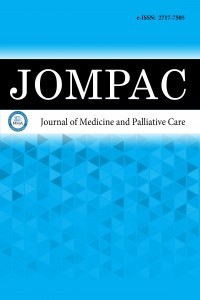1.
Sung H, Ferlay J, Siegel RL, et al. Global cancer statistics 2020: GLOBOCAN estimates of incidence and mortality worldwide for 36 cancers in 185 countries. <em>CA Cancer J Clin</em>. 2021;71(3):209-249.
2.
Siegel RL, Giaquinto AN, Jemal A. Cancer statistics, 2024. <em>CA Cancer J Clin.</em> 2024;74(1):12-49.
3.
Hsieh HY, Lu CH, Wang L. Long-term treatment outcomes/toxicities of definite chemoradiotherapy (intensity-modulated radiation therapy) for early-stage “bulky” cervical cancer and survival impact of histological subtype. <em>J Formos Med Assoc.</em> 2023;122(3):221-229.
4.
Dasari S, Wudayagiri R, Valluru L. Cervical cancer: biomarkers for diagnosis and treatment. <em>Clin Chim Acta.</em> 2015;445(12):7-11.
5.
Yadav G, Srinivasan G, Jain A. Cervical cancer: novel treatment strategies offer renewed optimism. <em>Pathol Res Pract.</em> 2024;254 (15):155136.
6.
Denk D, Greten FR. Inflammation: the incubator of the tumor microenvironment. <em>Trends Cancer</em>. 2022;8(11):901-914.
7.
Davidson B, Goldberg I, Kopolovic J. Inflammatory response in cervical intraepithelial neoplasia and squamous cell carcinoma of the uterine cervix. <em>Pathol Res Pract</em>. 1997;193(7):491-495.
8.
Templeton AJ, McNamara MG, Seruga B, et al. Prognostic role of neutrophil-to-lymphocyte ratio in solid tumors: a systematic review and meta-analysis. <em>J Natl Cancer Inst.</em> 2014;106(6):124.
9.
Zahorec R. Neutrophil-to-lymphocyte ratio, past, present and future perspectives. <em>Bratisl Lek Listy.</em> 2021;122(7):474-488.
10.
Cupp MA, Cariolou M, Tzoulaki I, et al. Neutrophil to lymphocyte ratio and cancer prognosis: an umbrella review of systematic reviews and meta-analyses of observational studies. <em>BMC Med.</em> 2020;18(1):360.
11.
Grivennikov SI, Greten FR, Karin M. Immunity, inflammation, and cancer. <em>Cell.</em> 2010;140(6):883-899.
12.
Bonavita E, Galdiero MR, Jaillon S, Mantovani A. Phagocytes as corrupted policemen in cancer-related inflammation. <em>Adv Cancer Res.</em> 2015;128(1):141-171.
13.
Xiong S, Dong L, Cheng L. Neutrophils in cancer carcinogenesis and metastasis. <em>J Hematol Oncol.</em> 2021;14(1):173.
14.
Ardi VC, Kupriyanova TA, Deryugina EI, Quigley JP. Human neutrophils uniquely release TIMP-free MMP-9 to provide a potent catalytic stimulator of angiogenesis. <em>Proc Natl Acad Sci USA.</em> 2007;104(51):20262-20267.
15.
Ethier JL, Desautels DN, Templeton AJ, et al. Is the neutrophil-to-lymphocyte ratio prognostic of survival outcomes in gynecologic cancers? A systematic review and meta-analysis. <em>Gynecol Oncol.</em> 2017;145(3):584-594.
16.
Zou P, Yang E, Li Z. Neutrophil-to-lymphocyte ratio is an independent predictor for survival outcomes in cervical cancer: a systematic review and meta-analysis. <em>Sci Rep.</em> 2020;10(1):21917.
17.
Trinh H, Dzul SP, Hyder J, et al. Prognostic value of changes in neutrophil-to-lymphocyte ratio (NLR), platelet-to-lymphocyte ratio (PLR) and lymphocyte-to-monocyte ratio (LMR) for patients with cervical cancer undergoing definitive chemoradiotherapy (dCRT). <em>Clin Chim Acta. </em>2020;510(1):711-716.
18.
Du JQ, Zhang F, Wang CQ, et al. Effects of peripheral blood neutrophil/lymphocyte ratio levels and their changes on the prognosis of patients with early cervical cancer. <em>Front Oncol. </em>2023;13(1):1139809.
19.
Prabawa IPY, Bhargah A, Liwang F, et al. Pretreatment neutrophil-to-lymphocyte ratio (NLR) and platelet-to-lymphocyte ratio (PLR) as a predictive value of hematological markers in cervical cancer. <em>Asian Pac J Cancer Prev.</em> 2019;20(3):863-868.

